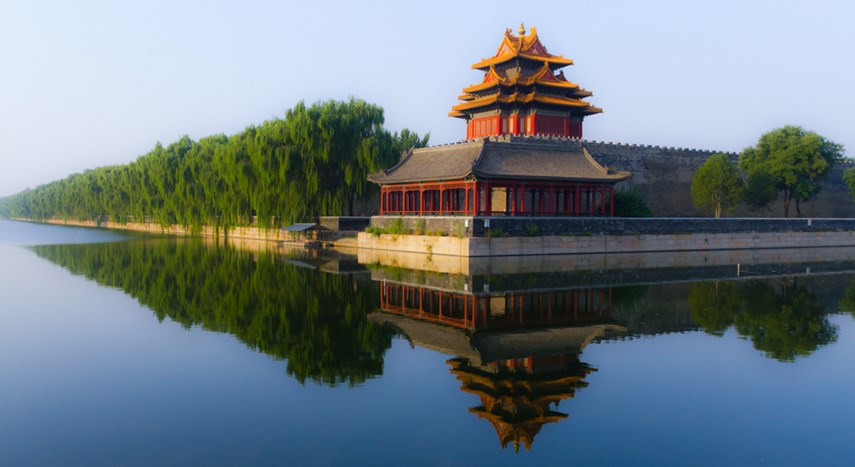In the 21st century we have grown up with the dizzying advancements of computer–engineered technology.
Some technologies have been under refinement for centuries or even millennia, long before the digital age – such as the industrial use of the railroad. More recently, in the last 150 years, railway tourism was very popular, until the arrival of air travel.
In 1987, American author Paul Theroux published a travelogue called “Riding The Iron Rooster” about an epic trip starting in London and ending up in the city of Chengdu, on the western side of China, using the traditional train travel of the day.
In China the pre-cultural revolution steam locomotives are now gone and diesel power is waning in favour of a new generation of highly efficient electric locomotives. Thanks to advancements in technology, the steel rails are challenging air travel in one of the world’s most populous countries.
The new trains are a more relaxed and efficient way to travel with much less hassle through security checks and come with a smaller carbon footprint. High Speed Rail or better known as HSR has taken off on a very large scale and now connects one third of the country. The first HSR passenger travel started in 2007 with a rapid build-up to the present day with more than 1.7 billion trips in 2017. The trains are 99.9 per cent on time and the staff are similar to what you expect to find on airlines.
HSR from Shanghai to Beijing takes approximately four and a half hours at 350 kilometres per hour. On a more relaxed tour – taking stops in-between – the same trip can stretch out over a week or two as you glide back into China’s remarkable historic past, stopping to experience culture, history and food as you head towards the north.
Starting off in the financial hub of modern China, the trip takes you from Shanghai’s bustling stock market present to the mystical past. It’s a dynamic city to visit – strolling along the Bung in the early evening to see the bulbous Oriental Pearl Tower and the city’s sky-high scrapers that light-up into huge LCD displays. In the streets there are all kinds of take-out vendors selling their wares such as Xiao Long Bao (soup dumpling) and Sheng Jian Bao (fried dumplings).
The HSR journey’s first leg through the northeast is short -– a mere 22 minutes to Suzhou. The famous water city, with a long history dating back to 514 BC is located on the lower reaches of the Yangtze River. Beautiful classical gardens, pagodas, canals and stone bridges give you an abundance of sites to explore. Just outside the city is Tongli. Designated as a World Unesco Site the canal village will sweep you away with its charm. Dating back to the Ming Dynasty, it has been named the “Venice of the East.” Long boats paddle visitors down the canals under the three bridges of Taiping, Jili and Changqing.
Every city on the track has a cathedral–like HSR train station with spacious interiors. The train speeds quietly through the rolling countryside towards the next stop in northern city of Xi’an, 6.5 hours away. HSR tracks are dedicated to passenger travel only. Rails are welded together with the maximum grade never surpassing 2.5 per cent.
The walled-city of Xi’an lies at the end of the ancient Silk Road route. Bikes can be rented to ride on top of the 14.3 kilometre-long defensive fortification built in the 14th century by Hongwu Emperor Zhu Yuanzhang as a military defense system. Outside the wall is the mausoleum of China’s first emperor, Qin Shi Huang Di, and his platoons of clay soldiers buried with him to protect him on the journey to the after-life.
Back inside the walls of the city there is endless food experiences from Muslim-style lamb to dumplings and noodles. New on the scene in Xi’an is a local craft beer industry with Xian Brewery situated just a kilometre away from the Great Goose Pagoda. They have a great selection of ales, lagers and specialty beers made right on premises. Downtown Xi’an to the HSR station is a short 20 minute-ride on the subway.
Heading north on HSR to the final destination of Beijing takes six hours. A marvel of Chinese engineering and manpower the system is only 50 per cent completed. When finished in the late 2020’s it will have 45,000 kilometres of track.
Most people’s “must see” list in Beijing includes the Forbidden Palace, Summer Palace and Temple of Heaven. Outside of the city the most popular site is the Great Wall. There are many locations to view but it is worth the extra time to take a day trip to Jinshanling or Simatai. Here you can get the feeling of the the great wall’s expanse across the tops of mountains for as far as the eye can see.
If you are interested in exploring China checkout the Continuing Studies Educational Travel Program at Langara College. This spring Brian K. Smith will lead a tour, China - Fusion of New and Ancient, from May 13 to June 1. Deadline to register is Feb. 13. For more information contact Janinah Jansen, CS Program Coordinator, Study Tours at [email protected] or by phone 604-323-5979.



